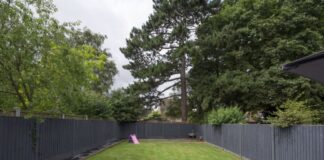Although protecting the environment should be more than enough motivation for going green and switching to renewable energy sources, it is the potential of reducing energy costs in the long-run that has caught the attention of many property owners opting for more sustainable ways to power their homes.
Using renewable energy sources goes a long way in protecting the environment. It not only reduces carbon emissions, but also helps improve the overall health of communities by cleaning the air we breathe and the water we drink. Because toxic chemicals aren’t necessarily used to process renewable energy, the risk of life-threatening illnesses, such as cancer is reduced.
If you’ve started your journey to eco-living by implementing energy efficient upgrades and designs and are ready to make the big leap into sustainable living, a good move is finding a renewable energy source that best suits your needs and resources.
1. Solar Panels
Solar panels have been around for a while and the industry has made major developments since their introduction, making solar installations dramatically more affordable. Neighborhoods can opt to make the transition to solar panels collectively and install community solar power systems rather than powering homes individually.
Solar is widely considered the best option for the average household’s energy needs and there are variations available so you can choose what works best for you.
If the structure of a house can’t withstand the weight of panels on the roof, they can also be installed in yards. A latest innovation in solar technologies are solar shingles which are basically roof tiles that generate energy. A solar alternative that doesn’t require the cost and complication of a complete transition, is solar water heaters, which heat up a water reserve using the sun’s energy.
A major concern that consumers have about solar is whether it’s viable in regions that aren’t always sunny. Solar panels do also store excess energy that can be used when needed. When there hasn’t been enough sun and energy is running low, it is also possible to connect to the national grid.
You could choose to supplement your solar energy with another energy source or you could use an entirely different setup altogether.
2. Tesla Powerwall
The Tesla Powerwall is more of a novelty than a practical solution but is a remarkable innovation with great potential to change the energy game. If you are looking to supplement an existing energy source, the Powerwall is a great option as it can store energy for days when there isn’t enough sun or wind generated.
If used alone, the Powerwall will last 1 day, 17 hours and 15 minutes – the website has a nifty calculator to help you see how long multiple Powerwall’s will last in an outage.
3. Biomass
Biomass is a less-known source of sustainable energy and has just recently become more easily accessible for households. Biomass is fuel generated from organic waste which releases significantly less greenhouse gas emissions than fossil fuels. Organic waste typically finds its way to dumpsites anyway, so using waste to generate fuel is simply a more sustainable way to get rid of waste.
When organic waste is burnt, steam is created using a water source. This makes a turbine rotate, creating energy. It is also always available, unlike solar power.
4. Wind Turbines
Although it’s an equally effective solution, there’s a lot more to consider before installing wind turbines. To begin with, it requires a bit more space than the average city home may have available and will probably make some noise. Wind power is also more expensive to install and takes longer to start paying for itself. It does, however, produce a significant amount of energy.
If you live on the outskirts of a city or have a sizeable property and consume a lot of energy, then wind turbines are definitely for you. Naturally, regions that are windy for most of the year would benefit from turbines as well.
5. Hydropower
An emerging trend in household alternative energy is using hydropower to power riverside homes. A glaring downside is that your home needs to be situated on the bank of a water source. If this happens to apply to you, then hydropower is a solid option.
Hydropower is a constant source of energy and works by diverting water though turbines which power your house. It also provides more energy than many other sources.
Deciding on the best alternative energy source depends on your individual needs and the resources available. Living in regions with unstable weather conditions may require a combination of alternative sources. It’s also worthwhile to organize neighborhoods to make the transition together which may lower the cost of installation and maintenance. Installing renewable energy may require some effort and expense at first, but in the long-run it will lower your energy costs and give you peace of mind.





















